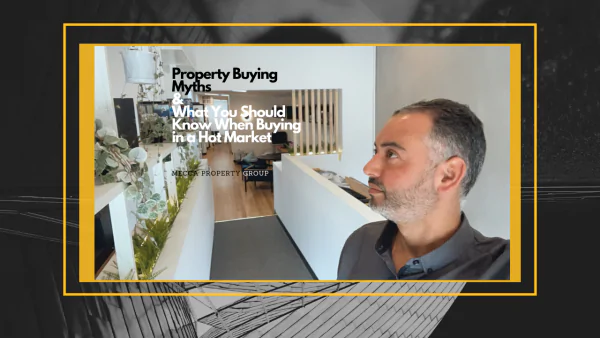

It’s been a record run for property markets around Australia and we continue to see properties selling quickly with multiple offers.
From the perspective of a buyer, this can be a little daunting. Just last week, I personally witnessed a property receiving over 100 offers. For an inexperienced buyer, these types of market conditions can leave you scratching your head and wondering what’s going on?
The first question many people ask me about a market like the one we’re currently experiencing, is whether properties are now too expensive? This is the type of question that many people have been asking themselves for decades when in reality we’ve seen that when you buy a good property, they continue to increase in value over a long period of time.
In the current market, we’re witnessing many properties that were purchased only months ago, still moving higher. A recent example is a property I purchased for a client in Capalaba Brisbane, QLD. We paid $549,000 which at the time was a suburb record for that type of home and my clients were worried the property was too expensive. Now only a few months later, we’re seeing comparable sales which would suggest that the same property is comfortably worth $600,000 – $630,000 and the market is still trending higher. Why – because each sale is considered a market comparable and the balance of 99 readily available buyers are still out there looking.
The main takeaway for those thinking that the market is too expensive is that when regions are experiencing high pressure it ultimately means lower risk for investors. As an investor, you want your property to have growth, to be rented out quickly and rented for a good amount. Market pressure ultimately achieves these three objectives and kills the risks.
If you’re searching for cheap, ‘undervalued’ properties, the reality is that you will only likely find a property that has significant issues and that’s why it’s cheap in the current market. Any good quality property will quickly receive multiple offers meaning a vendor is unlikely to need to sell for less than what the property is worth. By being in the market and paying a fair price, you’re far more likely to see strong gains that will outweigh any savings you might have had trying something that was significantly undervalued.
The second consideration I hear from many would-be buyers is that they will wait until the market corrects itself. Many believe that when interest rates rise and along with tighter lending requirements, this will slow down the property market.
The first mistake with this statement is to assume there is only one ‘property market.’ My approach to investing in property has always been to identify areas where there is a significant discrepancy between demand and supply.
As I’ve already mentioned, there’s a reason I’m looking at a property that has 100 offers on it. What this type of competition is telling me is that there are active buyers ready and waiting and clearly tight supply. If you think about this logically, if there are 100 offers, there are still 99 active buyers out there targeting the same suburb.
One of the key parts of the supply/demand equation is the amount of new stock coming onto the market. If a certain area has a big pipeline of supply coming online in the months or years ahead, that’s a red flag from an investment perspective.
When you combine heavy supply with rising interest rates and tighter lending, that’s when you have an area that will most likely see a price correction. This is what typically happens in growth corridors and other areas that have a lot of housing estates.
If an area has very few listings, no real supply coming in the future and a lot of sales taking place, then you know you have a location that is likely to continue to outperform.
That’s why it is critical to invest in these types of areas in the current market. Firstly, you’re going to continue to benefit from the upside that lies ahead in the current cycle. Secondly, you’ll be insulated from the broader market weakness if it occurs.
When we hear statements, like ‘markets are too expensive’ or that a buyer will simply wait for a correction, this is often the wrong type of thinking.
As an investor, you need to be capitalising on the current growth that we’re experiencing and using the conditions in your favour. By doing your research and due diligence on a location and having finance already in place, you have the ability to act quickly and seize the right opportunity when it presents itself.
By not acting now, the risk is oftentimes far greater, given the price you might have to pay to get into a comparable property in 12 months’ time.